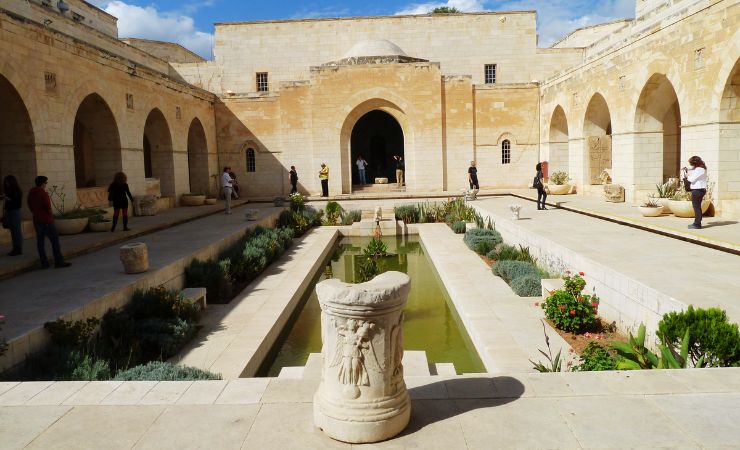Rockefeller Archeological Museum: Exciting Artifacts that Span Millenia
Rockefeller Archeological Museum in Jerusalem stands as a silent guardian of the region’s rich archaeological past, showcasing artifacts that span millennia.

Location
Located on Sultan Suleiman Street in East Jerusalem, the museum stands proudly northeast of the Old City’s walls, between Herod’s Gate and the Lion’s Gate.
The Story of the Rockefeller Archeological Museum
Previous Owners of the Land
Before the establishment of the museum, the land was known as Kerem el-Sheik, a hill located just outside the northeastern corner of the Old City walls. During the twilight of the Ottoman Empire, the area saw significant archaeological activity by British, American, French, and German expeditions.
Architectural Structure and Design
The museum’s design was the brainchild of Austen St. Barbe Harrison, the chief architect of the Mandatory Department of Public Works. Harrison envisioned a structure that would seamlessly blend eastern and western architectural elements. The museum is constructed from white limestone, exuding an aura of grandeur and timelessness. Above the main entrance, a stone bas-relief depicts the meeting of Asia and Africa. The museum also boasts ten stone reliefs representing various cultures and a unique gargoyle fountain in the inner courtyard, all crafted by the renowned British sculptor Eric Gill. Gill’s touch is further evident in the stone-carved signage throughout the museum in English, Hebrew, and Arabic.
The Rockefeller Museum’s History
The Rockefeller Archaeological Museum, originally known as the Palestine Archaeological Museum, was established on 13 January 1938. The museum’s foundation was laid on 19 June 1930. Designed by Austen Harrison, the chief architect of the Mandatory Department of Public Works, the museum is a harmonious blend of Eastern and Western architectural elements. The construction was momentarily halted due to the discovery of tombs from the fifth century BCE on the building site.
Initially, during the British Mandate, the museum was a beacon of culture and history. Post the Mandate period, the museum was under Jordanian control and was administered by an international council of trustees. However, in 1966, it was nationalized by King Hussein. Following the 1967 Six-Day War, the museum came under Israeli management and has since been under the care of the Israel Museum.
Today, the museum houses a vast collection of artifacts unearthed mainly during the British Mandate (1919-1948). It stands as a testament to the rich history of the region and the various civilizations that once thrived here.
House of the Dead Sea Scrolls..for a While
The Dead Sea Scrolls, one of the museum’s most prized collections, were housed there from their discovery in 1947 until 1967. Following the Israeli capture of East Jerusalem in 1967, the scrolls were relocated to the Israel Museum in West Jerusalem. The ownership of these scrolls has been a topic of contention ever since. A portion of the scrolls, including the Copper Scroll, was taken to Amman and is now part of The Jordan Museum’s collection.



Interesting Sites Near the Rockefeller Archeological Museum
- Damascus Gate: Damascus Gate is one of the main entrances to the Old City of Jerusalem.
- Garden Tomb: This serene garden is believed by some to be the burial site of Jesus Christ.
- Via Dolorosa: This is the path that Jesus is believed to have taken on his way to crucifixion. Sites located along the Via Dolorosa including St. Anne’s Church, the Church of the Flagellation, The Church of the Imposition of the Cross, the Ecce Homo Arch, and more.
- Mary’s Tomb: Located at the foot of the Mount of Olives in the Kidron Valley, this is traditionally believed to be the burial place of Mary, the mother of Jesus.



